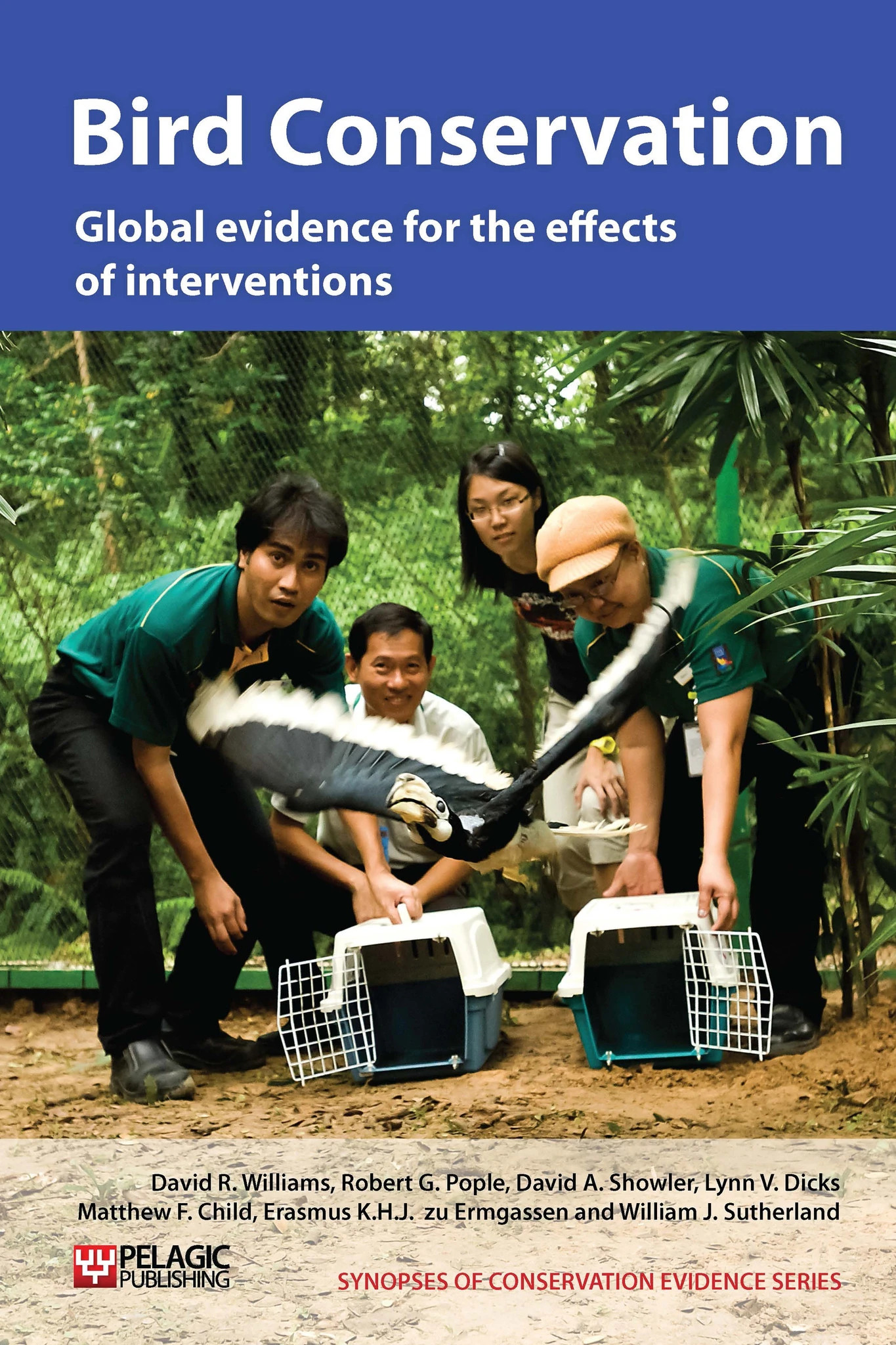Plant nectar flower mixture/wildflower strips for birds
-
Overall effectiveness category Likely to be beneficial
-
Number of studies: 7
View assessment score
Hide assessment score
How is the evidence assessed?
-
Effectiveness
55% -
Certainty
45% -
Harms
0%
Study locations
Supporting evidence from individual studies
A replicated, controlled study in summer and autumn of 1995 and 1996 on 15 sown set-aside strips on a farm in Cambridgeshire, UK (Clarke et al. 1997), found that more bird individuals (average 20% of the total) and species (average 56%) used the strips than the adjacent crop area (average 7% of individuals and 33% of species) in both years. However, the highest proportions of both individuals and species were recorded in the field boundaries (average 68% individuals and 80% of species). This study is discussed in detail in ‘Plant grass buffer strips/margins around arable or pasture fields’.
Study and other actions testedA randomised, replicated, controlled trial of sown grassy field margins from 2002 to 2006 in eastern England (Henderson et al. 2007) found that the management of margins affected bird use more than the seed mix used. The number of birds using the margins in summer increased by 29% between 2003 and 2006. Bird densities were higher on disturbed and graminicide-treated plots than on cut plots (no actual bird densities given, only model results). Bird densities were linked to densities of diurnal ground beetles (Carabidae), especially in disturbed and graminicide-treated plots. In winter, there were twice as many birds on cut margins as uncut margins, and twice as many birds in the second year than the first. Field margin plots (6 x 30 m) were established using one of three seed mixes: 1) Countryside Stewardship mix, 2) tussock grass mix and 3) a mixture of grasses and forbs designed for pollinating insects. The margins were managed in spring from 2003 to 2005 with one of three treatments: 1) cut to 15 cm, 2) soil disturbed by scarification until 60% of the area was bare ground, 3) treated with graminicide at half the recommended rate. There were five replicates of each treatment combination, at two farms - one in Boxworth, Cambridgeshire, England, and one in High Mowthorpe, Yorkshire, England. Birds were surveyed five to eight times between April and July from 2002 to 2006. In winters of 2004-2005 and 2005-2006, birds were also surveyed on 6 m margins on 10 farms in eastern England with two seed mixes (tussocky grass and fine grass). Margins were either cut in autumn or uncut. There were four replicates of each treatment combination per farm.
Study and other actions testedA randomised, replicated, controlled trial on four farms in southwest England (Pilgrim et al. 2007) found that 50 ´ 10 m plots of permanent pasture sown with a grass and legume seed mix attracted more birds, and more bird species than control treatments in both summer and winter. Plots were established in 2002, re-sown in new plots each year and monitored annually from 2003 to 2006. Legumes sown included white clover Trifolium repens, red clover T. pratense, common vetch Vicia sativa and bird’s-foot trefoil Lotus corniculatus. There were twelve replicates of each management type.
Study and other actions testedA replicated controlled trial on one farm in Warwickshire, UK in 2005-2006 (Pywell & Nowakowski 2007) found that field corners or margins sown with a wildflower mix did not have more birds in winter (species or individuals) than control crop plots. Average counts were close to zero birds/plot for both. The wildflower mix (25 broadleaved non-grass species, making up 10% by weight, with 90% grass from four species) was sown in August 2005 and treated with graminicide in November 2005. Plots were cut three times in 2006, and cuttings removed. The crop, oats, was sown in October 2005. Each treatment was tested in one section of margin and one corner in each of four fields. Farmland birds were counted on each plot on seven counts between December 2006 and March 2007.
Study and other actions testedThe second monitoring year of the same study as Pywell and Noweakowski (2007), from 2005-2007 (Pywell & Noweakowski 2008) found that wildflower plots did not have more birds in winter than control cereal plots. There were two birds/plot or fewer, and 0.4-1.6 bird species/plot on average on all treatments except those sown with wild bird seed mix. Farmland birds were counted on each plot on four counts between December 2007 and March 2008. The crop control in year two was winter wheat.
Study and other actions testedA replicated, controlled study from March-July in 2006 in winter wheat fields in mixed farming lands near Berne, Switzerland (Fischer et al. 2009), found that Eurasian skylarks Alauda arvensis with territories that included undrilled patches were significantly less likely to abandon their territory than birds without patches, and more likely to use the undrilled patches as nesting and foraging sites than expected by chance. The strips were sown with six annual weed species but otherwise resembled skylark plots and this study is discussed in detail in ‘Create skylark plots’.
Study and other actions testedA 2009 literature review of European farmland conservation practices (Vickery et al. 2009) found that the availability of bird food-species was higher in nectar-rich field margins than in crops, and several species used margins planted with wildflower mixes more than grass-only strips (see ‘Plant grass buffer strips/margins around arable or pasture fields’). This study discusses several other field-margin agri-environment options, which are described in the relevant sections.
Study and other actions tested
Where has this evidence come from?
List of journals searched by synopsis
All the journals searched for all synopses
This Action forms part of the Action Synopsis:
Bird Conservation
Bird Conservation - Published 2013
Bird Synopsis





)_2023.JPG)














